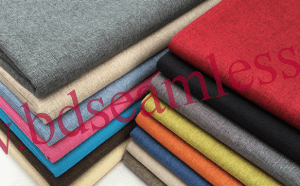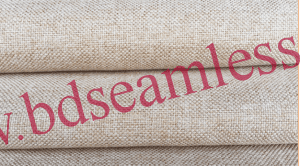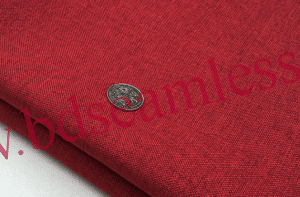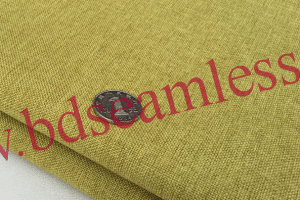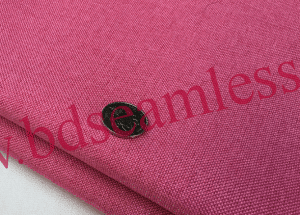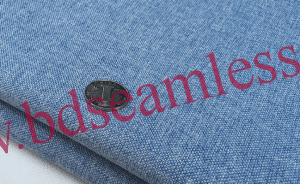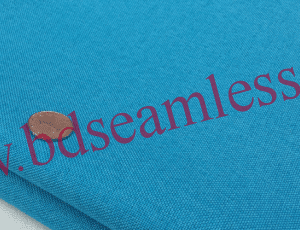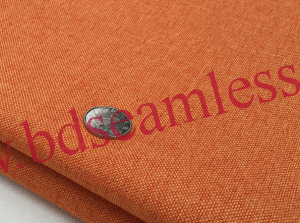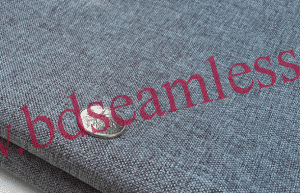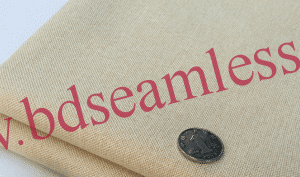What Is Color Fastness Of Textiles: Definition
The color fastness of textiles is also called dyeing fastness, which refers to the ability of colored textiles to resist various external effects without changing color. In recent years, in the international textile and clothing trade, the requirements for color fastness are not only to ensure the quality of the products, but also Constantly attach importance to its safety and environmental protection.
To customize fitness clothes or seamless clothes with good color fastness, please visit bdseamless.com.
What is color fastness? From the perspective of professional definition, the so-called color fastness (referred to as color fastness) refers to the external factors (extrusion, friction, washing, rain, exposure, light, sea water immersion, saliva) during use or processing of dyed fabrics. The degree of fading under the action of impregnation, water stains, sweat stains, etc.) is an important indicator of fabrics.
What Is Color Fastness:6 Color Fastnesses Of Fabrics
1. Rubbing fastness(what is color fastness): Rubbing fastness refers to the degree of color fading of dyed fabrics after rubbing, which can be dry rubbing and wet rubbing. The rubbing fastness is evaluated based on the degree of white cloth staining, and it is divided into 5 levels. The larger the value, the better the rubbing fastness.
2. Light fastness(what is color fastness): Light fastness refers to the degree of discoloration of colored fabrics under the action of sunlight. The test method is to compare the fading degree of the sample after simulating sunlight with the standard color sample, which is divided into 8 grades, 8 is the best result, and 1 is the worst. Fabrics with poor light fastness should not be exposed to the sun for a long time and should be dried in the shade in a ventilated place.
3. Sublimation fastness(what is color fastness): refers to the degree of sublimation of dyed fabrics in storage. The dye fastness of normal fabrics is generally required to reach 3-4 to meet the needs of wearing.
4. Washing fastness(what is color fastness): Washing or soaping fastness refers to the degree of color change of dyed fabric after washing with washing liquid. Usually, the gray graded sample card is used as the evaluation standard, that is, the color difference between the original sample and the faded sample is used for judgment.
The washing fastness is divided into 5 grades, grade 5 is the best and grade 1 is the worst. The fabrics with poor washing fastness should be dry-cleaned. If they are wet-washed, the washing conditions should be paid extra attention, such as the washing temperature should not be too high and the time should not be too long.
5. Perspiration fastness(what is color fastness): Perspiration fastness refers to the degree of fading of dyed fabrics after a small amount of perspiration.
6. Ironing fastness(what is color fastness): refers to the degree of discoloration or fading of dyed fabrics during ironing.
What Is Color Fastness: Common Problems Of Textile Color Fastness
In daily random inspections and consumer complaints, the most common textile color fastness problems are as follows:
1) The light fastness is unqualified. In the process of wearing the outerwear, the color of the part that is exposed to more sunlight becomes lighter or discolored (usually the back and shoulder parts), while the color of the place that is not or less irradiated does not change or changes lightly, resulting in a product with the same color The color varies in shades and can no longer be used.
2) The color fastness to washing, the color fastness to soaping and the color fastness to dry cleaning are unqualified. High-end silk garments, wool garments, and pure cotton garments are most prone to this problem.
3) The color fastness to rubbing is unqualified. During the use of textiles, because different parts of the product are subjected to different degrees of friction, the degree of discoloration is different. For example, the elbows of tops, sleeves, collars and underarms are most likely to fade. In addition, the hips and knees of the pants are also easy to fade.
4) The color fastness to perspiration is unqualified. Mainly summer clothes or close-fitting underwear are dipped in sweat and faded when they are worn.
What Is Color Fastness: Factors Affecting Color Fastness And Improvement Methods
Products with poor color fastness will fade during wearing, which will affect other clothing worn on the body, or contaminate other clothing when washed with other clothing, affecting appearance and wearing performance; on the other hand, good color fastness is directly related to bad To the health and safety of the human body. Dye molecules and heavy metal ions on products with poor color fastness may be absorbed by the human body through the skin and harm the skin and even harm the health of the body.
The factors that affect the color fastness of textiles are divided into internal factors and external factors. Internal factors refer to the firmness of the combination of dyes and fibers, and external factors refer to the external force applied to the product or the environmental conditions provided by external factors during use. External factors cannot be controlled, so producers must strive to improve the color fastness of the product itself. Here are a few solutions based on personal practical experience for everyone to learn from.
1. Selection of dyestuffs(what is color fastness)
The selection of dyestuff is very important. If the choice of dyeing materials is not appropriate, no matter how good the auxiliary agent and the best dyeing process are, there is no way to dye high-quality color fastness. Only by choosing the right dyes can we talk about the next step.
1.1 Select the dye according to the characteristics of the fiber(what is color fastness)
Different types of dyes and fibers have different binding forms, and the strength of the binding bonds is also different. After the type of dye is determined, select dyes with high dyeing performance. For example, when dyeing wool fabrics, they are also strong acid dyes. The domestic strong acid dyes are not as good as the imported strong acid dyes. Not only the color is not good, but the firmness of the combination is not as good as the latter; or the domestic strong acid dyes are also the same.
Different dyes have different binding fastness to wool and dyeing vividness. For example, the color fastness of dyeing wool yarn with weak acid dyes is higher than that of strong acid dyes; while for pure cotton fabrics or regenerated cellulose fiber fabrics, either direct dyes or reactive dyes can be used; for silk fabrics, weak acid dyes can be used. In addition to dyes and some reactive dyes, individual direct dyes can also be used.
1.2 Choose dyes according to the shade of color(what is color fastness)
After determining the type of dye, it is necessary to further determine which dye to use according to the color system and depth of the dyed color. First, try to choose dyes with shades close to the desired color, and if there is a deviation, use other dyes to color; second, look at the color fastness index of the selected dye. The color fastness of the dye itself is poor, and the process can increase the color fastness by half the level; third, see whether the saturation of the dye can reach the required color depth.
If you choose a dye with a very low dyeing rate, even if it can temporarily achieve the required high depth of color after processing, the combination of the dye will not be firm, and it will fall off during use or reprocessing.
1.3 Choose dyes according to their own color fastness grades(what is color fastness)
In the introduction of each dye, the color fastness grade of the dye is introduced. When choosing a dye, you must choose the dye according to the color fastness grade required by the product, and the dye fastness of the dyes of the matching colors should be similar. For example, the color fastness of the dye itself can only reach 2 to 3, or even 1 to 2, even the best auxiliary and dyeing process can not dye products with 4 to 5 color fastness.
Because the color fastness of the dye mainly depends on the bonding force between the dye and the fiber. If the bond between the two is not strong, no external force can make them bond firmly, even if the color is improved. , Also can not withstand the damage of external factors such as washing and friction.
1.4 Dyeing rate of dye to fiber(what is color fastness)
Different dyes will exhibit different dye uptake rates, and under different dyeing conditions, the dye uptake rate of the same dye is also different. Therefore, the dyeing rate must be considered when choosing dyes, otherwise there will be competition between dyes, that is, one of the dyes will occupy the dyeing position of the fiber in advance, so that other dyes can only be dyed on the surface of the fiber, not evenly.
It forms a strong bond with the fiber, which is first destroyed in the subsequent process or daily use. This is why some colors fade and show a completely different color system from the original color. Therefore, when selecting dyes, dyes with similar dyeing speeds under the same conditions must be selected, which is also very beneficial to the next step of the formulation process.
1.5 There must be good compatibility between dyes(what is color fastness)
Different dyes in the same type of dyes have different compatibility. The greater the compatibility value, the better the ability of the dyes to match colors with each other. There must be good compatibility between the dyes of the matching colors. It is best to use three primary colors for colors that are not easy to fight. The three primary colors have the best compatibility among each type of dyes, and they are also the three dyes with the most complete and most positive color matching.
Therefore, it is best to use the three primary colors to match the colors that are more difficult to dye, and try not to use other dyes. It is prone to competition dyeing and easy to dye flowers.
1.6 Minimize the number of dyes needed(what is color fastness)
To select dyes, firstly select dyes with shades similar to the desired color, and then use one or two dyes to supplement the lack of shades of the main dyes, and choose dyes of the same color series to produce the color Pure, smooth, gorgeous and full. Try not to use four or five dyes for coloring. That is not easy to color, and it is not easy to handle large-scale dyeing. Moreover, although the color and luster are matched, the dyed shade is not bright and full, and the dye cannot be fully combined with the fiber, resulting in poor color fastness.
2. Selection and use of additives
2.1 Choose the right additives
After determining the type of dye, the choice of additives is also very important. Generally try to choose the auxiliary agent that matches with the dyestuff, if it is the ordinary dyestuff that is used routinely, the determination of the auxiliary agent amount and the method of use should be emphasized. For dark colors, the dye is not easy to be exhausted, and the additives can be added in batches to increase the exhaustion rate. It can also improve the fastness of dye adsorption and play a role in fixing color.
2.2 Minimize the amount of retarder
The amount of retarder that plays a role of retarding dyeing should be reduced as much as possible, otherwise it will have the effect of stripping. On the one hand, it will reduce the dye uptake, and on the other hand, it will weaken the binding force of the dye and the fiber, which will make the color fastness worse. For colors that are easy to dye, the leveling effect can be achieved through the deployment of dyes and the heating speed.
2.3 Selection of fixing agent
The use of fixing agent will greatly improve the color fastness of the dye, generally at least 0.5 to 1 level, but the choice of fixing agent should also consider the fastness of the dye. You can’t just look at individual items. For example, after reactive dyes are treated with cationic low-molecular-weight or polyamine-type fixing agents, the washing fastness of the fabric is 4 to 5, but the light fastness will decrease. When fixing, it is necessary to strictly control the amount of fixing agent, fixing temperature, and fixing time.
2.4 Soaping and washing(what is color fastness)
When soaping and washing, it is necessary to wash thoroughly, and to ensure the washing temperature and time, otherwise, the floating color on the surface of the fabric will fade during use.
2.5 Use of softener
In order to make the product a plump and soft feel, it is necessary to add a softener. Softeners are cationic, anionic, nonionic and silicone. Softener is the last process after the dyeing process. The dye and the softener react further, which may reduce the color fastness. Especially when the acid dye is dyed with silicone softener, some of the dye will even be removed during the softening process. , Make the color slightly lighter. Therefore, the amount of softener used for softening treatment should be just right, otherwise, it will not only feel sticky, but also affect the color.

